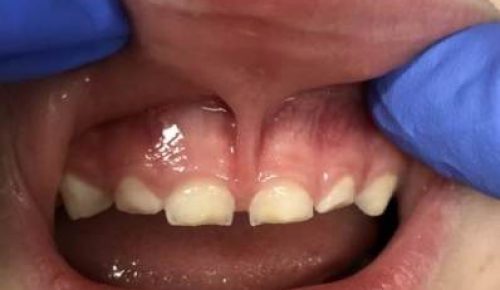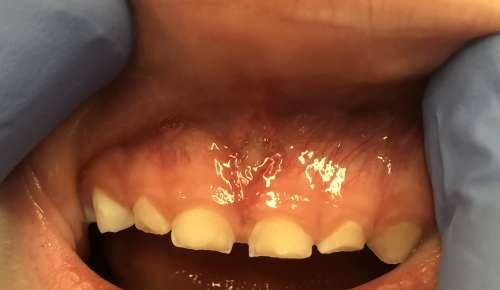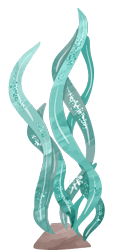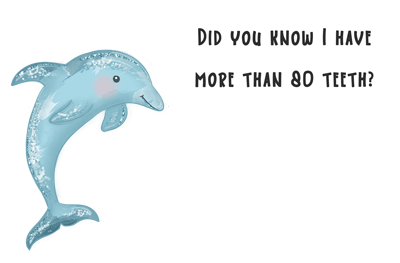

Frenectomy
Frenectomy (also known as frenulectomy, frenumectomy, or frenotomy), involves the excision of the frenulum for the purpose of increasing the mobility of the tongue. Simple excision of the frenulum (tongue clipping) is adequate for partial ankyloglossia and is often an office procedure in neonates.
A frenotomy or frenectomy is a procedure used to correct a congenital condition in which the lingual (tongue) or labial (upper lip) frenulum is too tight, or too thick, causing restrictions in movement that can cause significant difficulty with breastfeeding, and in some instances, other health problems like dental decay or spacing, speech difficulties and digestive issues. When it affects the lingual frenulum, this condition is commonly called a tongue tie (the medical term is ankyloglossia). Approximately 5% of the population has this condition, so your lactation consultant or doctor may feel that a procedure is warranted to improve symptoms.
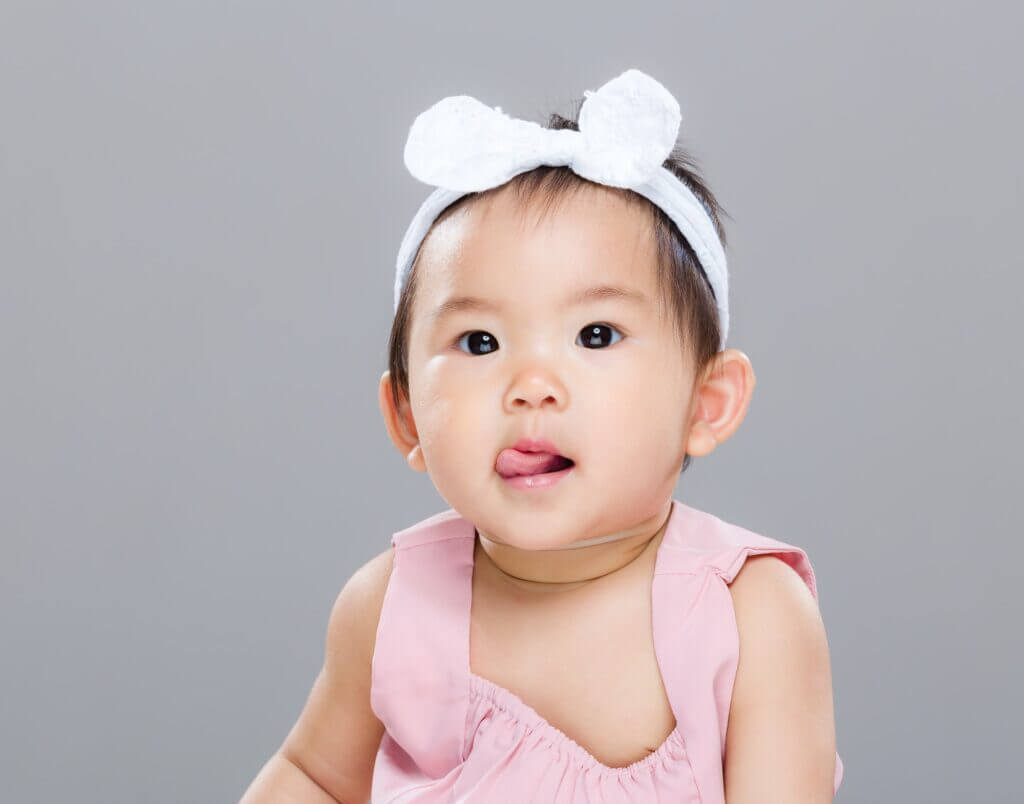

What to Expect
- For babies under the age of 12 months a topical numbing cream will be applied to the area and a small amount of local anesthesia is administered with a very fine gauged needle. The same process is used for older children.
- Crying and fussing are common during and after the procedure.
- You may breastfeed, bottle feed, or soothe your baby/child in any manner you’d like following the procedure.
- Any open oral wound likes to contract towards the center of that wound as it is healing (hence the need to keep it open with daily exercises).
- If you have two raw surfaces in the mouth in proximity, they will re-attach.
The main risk of a frenotomy is that the mouth heals so quickly that it may prematurely reattach at either the tongue site or lip tie, causing a new limitation in mobility and the persistence or return of symptoms.
Stretches
A small amount of spotting or bleeding is common after the procedure, especially in the first few days. Because a laser is being used, bleeding is minimized. Wash you hands well prior to your stretches (gloves are not necessary). Apply a small amount of coconut oil to your finger prior to your stretches. Our recommendation is that stretches be done 4 to 6 times per day for the first 2 weeks, and then spending the 3rd week quickly tapering from 4 to 1 time per day before quitting completely at the end of the 3rd week.
The Upper Lip
The easier of the 3 sites to stretch. If you must stretch both sites, we recommend that you start with the lip. For the upper lip, simply place your finger under the lip and move it up as high as it will go (until it bumps into resistance). Then gently sweep from side to side for several seconds and you can do a rolling pin motion to try and keep the diamond open. Remember the main goal or this procedure is to insert your finger between the raw, opposing surfaces of the lip and the gum so that they cannot stick together.
The Lower Lip
Stretch the lower lip outward and toward the chin then wiggle the lip side to side, and back and forth.
The Tongue
Should be your next area to stretch. Insert both fingers into the mouth (insert one in the mouth and go towards the cheek to stretch out the mouth, making room for the other index finger) Then use both index fingers to lift the tongue towards the roof of the mouth. The tongue needs three separate stretching motions:
- Once you are under the tongue, try to pick up the tongue as high as it will go (towards the roof of the mouth). Hold it there for 1-2 seconds, relax and do it four more times. The goal is to completely unfold the diamond so that its almost flat in orientation (remember the fold of the diamond across the middle in the first place it will reattach).
- With one finger propping up the tongue, place your other finger in the middle of the diamond and do a gentle circular stretch for several seconds to dilate the diamond.
- Once that is done, turn your finger sideways and use a rolling pin potion to try and keep the diamond as deep as possible. Make sure your finger starts within the diamond when doing this stretch. Once it’s done, repeat the motion on either side of the diamond (outside the diamond) to loosen up the musculature of the remainder of the floor of the mouth.
Sucking Exercises
- Slowly rub the lower gum line from side to side and your baby’s tongue will follow your finger. This will help strengthen the lateral movements of the tongue.
- Let your child suck on your finger and do a tug of war, slowly trying to pull your finger out while they try to suck it back in. This strengthens the tongue itself.
- Let your child suck your finger and apply gentle pressure to the palate, and then roll your finger over and gently press done on the tongue and stroke the middle of the tongue.
Starting several days after the procedure, the wound(s) will look yellowish or white and will look very similar to pus. This is a completely normal inflammatory response. The discoloration is a scab and will start to crumble around the edges, and eventually become loose or slough off. If you are concerned that the area looks red and inflamed, call our office and we will ask you to send a picture or visit our office to evaluate the area.
Some of our patient's results
